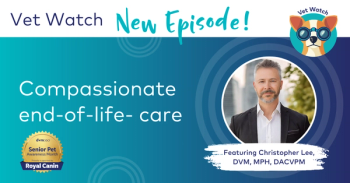
- American Veterinarian® July 2023
- Volume 5
- Issue 7
- Pages: 6
Combining the best of private practice with clinic spay/neuter care
The author opines on speed, safety, and surgery skills needed for this common procedure.
Shelters provide spay/neuter clinics to end pet overpopulation. With this mission, they strive to economically alter as many pets as possible in the shortest time frame possible. Their incredible need for speed has effectively provided our profession with unsung heroes; high-volume spay/neuter veterinarians.
Although these individuals may lack the board certification to call themselves specialists, what they do is extraordinary. An experienced high-volume veterinarian can easily and safely spay a cat or neuter a dog about every 3-4 minutes, with a large, deep-chested, obese dog spay taking 10-20 minutes.
Though sometimes unnoticed, these surgeons are also highly skilled. They have experienced every anatomical anomaly out there. They have repaired every kind of mishap. They face the large obese dog spay with confidence. The more experienced the surgeon, the safer the surgery. And while in private practice, the shorter the surgery, the safer the anesthesia, this is not so at shelters.
Most spay/neuter candidates are young and healthy, so shelters are able to safely dismiss expensive and time-consuming protocols in favor of those that increase efficiency of numbers. Down time between pets is eliminated by choosing anesthetics that reliably and rapidly induce a long-acting and deep plane of anesthesia. Reversal agents, costly in terms of both time and money, are rarely used. Though surgery is short, anesthetic time is not.
When speed is the kingpin, overall care, although adequate, is never going to be ideal. High-volume techniques spare staff time so they can keep up with a rate of pets per hour. One technique involves using the same anesthetic agents in all pets of the same species. Another is to dose by volume instead of mg/kg. Sometimes, pets are not weighed. Cats are often sorted into small, medium, and large sizes. Drugs are pre-drawn into separate containers for each size category and the staff pulls from the appropriate container. It works, it is safe for the healthy young pet, and it is definitely affordable.
Meanwhile, at the private practice, a less-experienced veterinarian may be taking the time to individualize care and tweak anesthesia to maintain the lightest effective plane. Pets are weighed and examined. Individualized protocols are based on health status, temperament, and physical attributes. Drug doses are calculated in mg/kg and given only to effect where possible. More attention is paid to perioperative monitoring and communication is individualized and stellar.
Currently, the skill of the high-volume surgeon is essentially an undervalued benign side-effect of speed. Imagine a world where the thought process is reversed. With the goal of optimal care instead of volume, the primary value of the surgeon is in their vast experience. Their speed, though secondary, is no less significant. In this world, speed is combined with shorter acting anesthetics, quality reversal agents, and quality monitoring to optimize safety instead of hindering it.
In this world, we up the game for the well-loved family pet. We also offer the skill of the experienced surgeon without the price tag of board certification.
Lori Cobb, VMD, opened Ace of Spays in 2005 as an experiment to test the viability of the model offered in this article. Though she was gratified over the many years she travelled from shelter to shelter to perform spay/neuter surgeries, she yearned for the opportunity to increase quality of care without financial constraints. Ace of Spays remains a successful and popular part of the community. More information on high volume techniques can be found on the practice web site at njace.org
Articles in this issue
over 2 years ago
New study finds that slow walking could be a sign of dementiaover 2 years ago
New diagnostic test for kidney injuryover 2 years ago
Understanding mRNA and DNA vaccines in veterinary medicineover 2 years ago
Integrative approach to treating Giardia lamblia infectionsNewsletter
From exam room tips to practice management insights, get trusted veterinary news delivered straight to your inbox—subscribe to dvm360.






